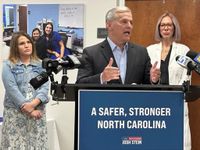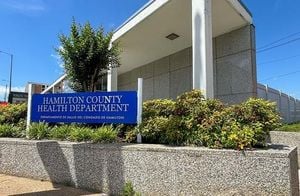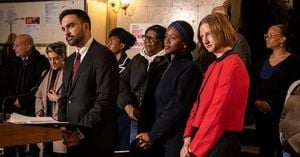In the heart of Charlottesville, Virginia, the hum of activity at the Free Clinic is a testament to both the resilience and the mounting pressures facing America’s healthcare safety net. On September 26, 2025, the clinic’s staff gathered with Senator Tim Kaine for a roundtable discussion that laid bare the challenges and hopes of those working on the front lines of healthcare. Emily Little, a nurse who left the emergency room three years ago to join the Charlottesville Free Clinic, didn’t mince words about what she’s witnessed. “This is what it could look like if we had universal care,” Little told Kaine, according to CVILLE RIGHT NOW. “It’s possible. We have a nursing shortage and also a physician shortage because they’re not doing the kind of stuff they used to be able to do. But we’re doing it here. It’s possible.”
Little’s optimism, though, is tempered by mounting anxieties. The conversation with Kaine, which included executives from free clinics in Orange and Greene County, quickly turned to the looming threat of federal Medicaid cuts. Dr. Mo Nadkarni, speaking with urgency, warned, “With these latest Medicaid cuts, we’re looking at 17 million more people across the country losing their health insurance. We’re looking at the subsidies for Obamacare going away, and people dropping off those rolls. … We’re very nervous that we’re going to get overrun with new patients that need more care, that were getting care elsewhere.”
It’s not an abstract concern. Nearby, in Augusta County, three clinics are shuttering their doors—a ripple effect that’s expected to overwhelm remaining facilities like the Charlottesville Free Clinic. Kaine, reflecting after the event, acknowledged the gravity of the situation: “I needed to be reminded that even though most free clinics don’t apply for Medicaid reimbursements, the Medicaid cuts will affect them dramatically because people losing Medicaid and health insurance will end up coming to free clinics. It affects the number of people coming in the door.”
The Charlottesville Free Clinic is a lifeline for many in the community. As of late September 2025, it employs 21 staff members—both full and part-time—but its real strength lies in its roughly 600 volunteers. Over 60% of the clinic’s funding comes from donations and grants, with another 30% provided by city, county, and state sources. The numbers are staggering: more than 3,000 patients walk through its doors annually, accounting for some 8,000 visits each year. Yet, according to executive director Willa Barnhardt, that’s only about 21% of the local population in need of healthcare assistance.
“Some of our patients work two jobs,” Barnhardt explained. “They’re not allowed to work enough hours to get health insurance at that job. So, after two jobs, they’re coming to the free clinic because they know they can be seen.” The clinic’s approach is holistic—every patient is screened for depression and anxiety, and medical, dental, and mental health services are provided under one roof. There’s even an on-site pharmacy, ensuring patients not only get their medications but are also followed up with to make sure prescriptions are filled and taken properly.
This integrated model is, in the words of board chairperson Dr. Will Knight, “a dream world.” Board secretary Dr. Sandhya Chhabra echoed the sentiment: “It is truly the way medicine should be practiced.” For Little, the experience has been transformative: “It helps me imagine what healthcare could look like if we weren’t bogged down by billing. If we weren’t bogged down by going after, ‘Is this person approved for this thing?’ It is a different form of medicine that’s being done at this place. And I think this is a model for what all of healthcare could be.”
But the dream comes with caveats. Officials at the roundtable pointed to rising trends in diabetes, depression, anxiety, and nutrition issues throughout the region. The challenge is compounded by social determinants like housing and transportation. In Greene County, for instance, a surge in homeless patients is presenting new hurdles for free clinics, according to executive director Pam Morris.
Meanwhile, just south in North Carolina, a parallel crisis is unfolding. On September 25, 2025, Governor Josh Stein announced that Medicaid reimbursement rates for doctors, hospitals, and other providers would be reduced starting the following week, a direct result of a $319 million budget shortfall and a political impasse in the state legislature, as reported by the Associated Press. North Carolina’s Medicaid program serves 3.1 million people, and the cuts are not trivial: rates will drop by 3% for home health and ambulance services, and by as much as 10% for hospitals, nursing homes, and hospice care.
Stein didn’t hold back his frustration. “They put their political dispute ahead of our people’s health,” he said at the Alliance Medical Ministry in Raleigh. “Their disagreements have nothing to do with Medicaid. It’s hard for me to express the gravity of their failure.” Physicians, too, are sounding the alarm. Dr. Jenna Beckham warned, “This will lead to longer wait times, delayed diagnoses and worse health outcomes for the patients of our state, especially for those who live in rural communities and who are already marginalized and underserved.”
The funding gap has persisted despite additional allocations by the General Assembly earlier in 2025. With the legislature not scheduled to reconvene until October 20, Stein’s administration says it can’t delay the cuts any further without risking even deeper reductions down the line. The political finger-pointing has grown fierce. Republican lawmakers argue that Stein’s move is premature and unnecessary, with GOP Rep. Grant Campbell, himself a physician, asserting, “The governor has decided with very little notice to threaten not us but the North Carolina residents needing health care with massive cuts that will begin months before they have to.”
Efforts to resolve the funding crisis have so far failed. Both House and Senate Republicans passed bills to increase Medicaid funding by $190 million annually, but they couldn’t agree on a final measure. The stalemate centers on whether to allocate $208.5 million in federal funds for a new children’s hospital in Wake County and rural health initiatives. Senate Republicans insist the projects were previously agreed upon and are vital, while House leaders question the necessity of another children’s hospital in a region already served by several such facilities.
Amid this legislative gridlock, the real-world consequences are already being felt. Physicians warn that reduced reimbursement rates may prompt doctors to leave the Medicaid program altogether, further straining access for the state’s most vulnerable residents. Rural and underserved communities, in particular, face the prospect of longer wait times, delayed diagnoses, and deteriorating health outcomes.
Back in Charlottesville, the sense of urgency is palpable. With only a fraction of those in need receiving care, and with the specter of more patients losing insurance coverage due to federal and state-level Medicaid cuts, free clinics are bracing for an influx that could test their limits. The integrated, volunteer-driven model at the Charlottesville Free Clinic offers a glimpse of what healthcare could be at its best—but also a sobering reminder of the fragility of the safety net in the face of political and fiscal headwinds.
As the debates rage on in statehouses and the halls of Congress, one thing is clear: the fate of millions hangs in the balance, and the choices made in the coming weeks will reverberate far beyond the walls of any single clinic or hospital.




